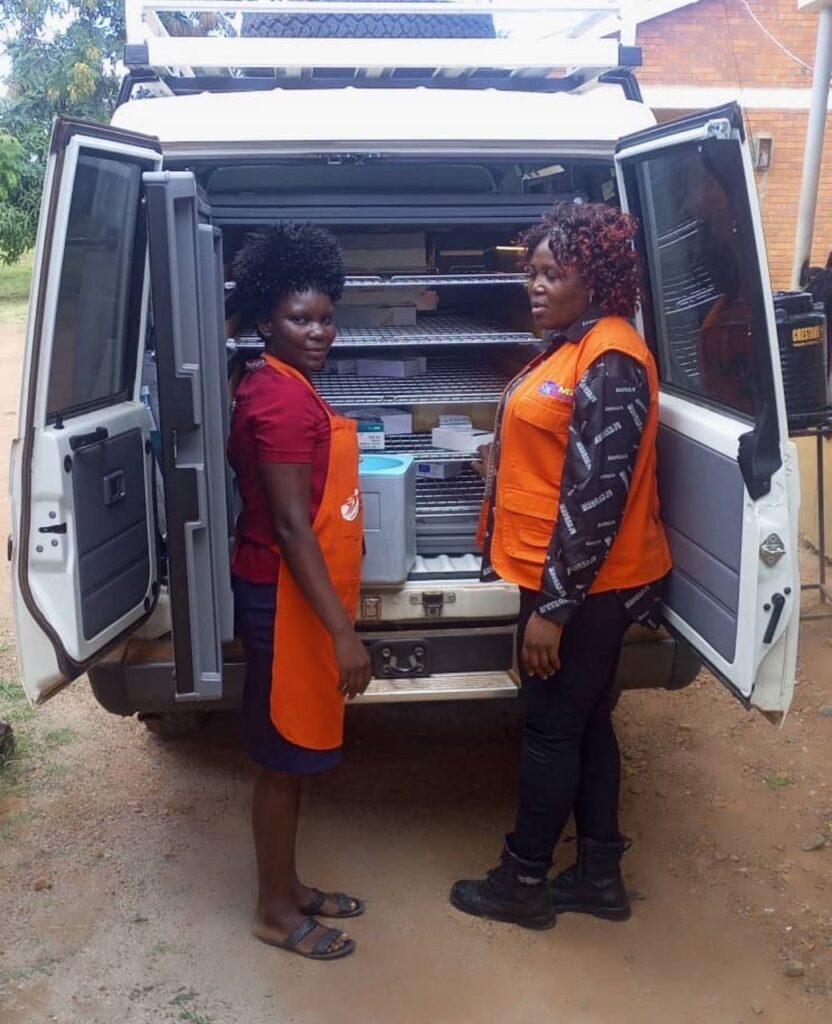National Medical Stores (NMS) with support from Government of Uganda, launched a transformative Vaccine Last-Mile Delivery (VLMD) Initiative aiming to ensure life-saving vaccines reach even the most remote communities. Dubbed “Taking Vaccines to The Last Mile,” the program was launched at NMS headquarters in Kajjansi by the Minister of Health Minister Dr. Jane Ruth Aceng, marking a pivotal shift in the country’s immunization strategy.
Ministry of Health, based on the zero- dose data started the vaccine last mile delivery, starting with Busoga region. This region had the biggest number of zero dose children (children who have never received any vaccine, since birth). The districts where implementation of the 2 cycles of last mile deliveries are; Bugweri, Bugiri, Buyende, Namutumba, Mayuge, Kaliro, Luuka, Iganga, Kamuli, Namayingo, Jinja and Jinja city.
According to the 2016 Landscape analysis and advocacy recommendation report, approximately 15% of health facilities receive a direct delivery of immunization supplies from the district vaccine store while the remaining health facilities self-pick their supplies. This self-pick arrangement at irregular intervals results in frequent interruptions in service delivery at lower health facilities.
Several bottlenecks affect reliable distribution of vaccines and immunization supplies from the district to the health facility level and these include
- Unreliable access to transportation means for supervision and vaccine distribution,
- Hard-to-reach areas,
- District management short falls that impact timely access of funds for vaccines and supplies distribution,
- Poor vaccines handling during delivery and storage leading to wastage.
- Limited visibility of facility level vaccine stock
The current practice of health facilities routinely making long and sometimes frequent trips to pick vaccines and supplies from DVS is not sustainable and leads to inequitable access of vaccines hence missed opportunities and communities.
To address these persistent challenges, Uganda has explored multiple last-mile vaccine delivery models since 2018, including a fully outsourced approach and an in-sourced model that extends vaccine distribution points closer to health facilities. Building on these lessons, this structured last-mile delivery mechanism, was rolled out in April 2025. NMS using its big reefer trucks delivers vaccine supplies to the DVS, from where the smaller refrigerated vans, pick the same and conduct last mile delivery, together with district staff.
Objectives of the Vaccine Last Mile Delivery
- Ensure equitable and timely vaccine distribution to health facilities
- Reduce the burden of zero-dose children by addressing vaccine availability gaps
- Improve vaccine stock visibility at the facility level.
- Contribute to enhanced cold chain equipment (CCE) maintenance and management
- Strengthen on-the-job mentorship for health workers in vaccine and stock management
- Increased vaccine availability, reducing missed immunization opportunities
- Strengthened vaccine management capacity through mentorship
- Reduced transportation burden on health facilities
- Improved cold chain maintenance and tracking. vLMD will support and compliment other functions that are critical for vaccine management like maintenance, by flagging and following up resolution of faulty CCE
With performance reviews, monitoring and evaluation, key lessons and concepts will be adopted from the implementation in this region, and will help process and procedural improvements for the country wide roll out.
NMS remains a committed player in supporting this vaccine last mile delivery programme.




